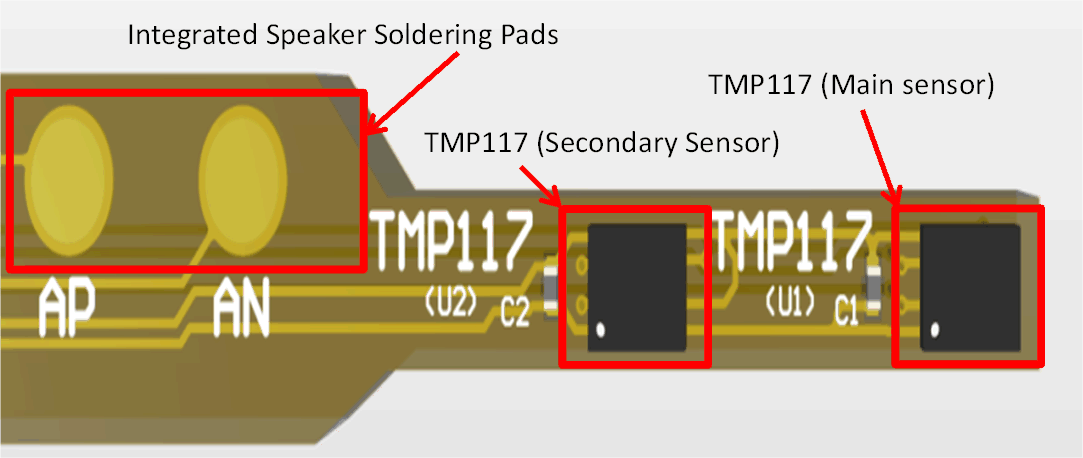TIDUEX1A December 2020 – March 2021
2.3.2 System Design Theory
This design features headers to connect an MCU for communication to the TMP117 devices and inputs to a speaker as shown in Figure 2-4. There are also integrated speaker soldering pads towards the end to solder on a small speaker as shown in Figure 2-5. The two TMP117 are used to collect temperature data determine body temperature of the user.
 Figure 2-4 MCU
and Speaker Input Headers
Figure 2-4 MCU
and Speaker Input Headers Figure 2-5 Integrated Speaker Soldering pads and TMP117
devices
Figure 2-5 Integrated Speaker Soldering pads and TMP117
devices